SUNGKYUNKWAN UNIVERSITY (SKKU), SEOUL, KOREA
- World's First Technology to Analyze and Visualize a Solar Battery in 3D
- Ultralow Power Complementary Inverter Circuits Using P- and N-Channel Silicon
Nanowire Field-Effect Transistors - Fabrication of Artificial Tissues/Organs Using Extrusion-Based Cell Printing Technique
- Carbon Dioxide Clean Energy Conversion Technology Developed
- Graphene Oxide: Crafting a Photonic Paintbrush
- Prof. In Su KIM Develops 'Catalytic Grignard Synthesis'

A research team from the College of Information and Communication Engineering at SKKU discovered an energy defect in the CulnGaSeS structure of a solar battery and three-dimensionally (3D) visualized the defect's shape and distribution.
The main title of the research is 'Defect Visualization of Cu(InGa)(SeS)2 Thin films using DLTS Measurements' and it was published in the Science Report's August edition.
The research was led by Dr. Sung Hur and Prof. Byoung D. Choi from the College of Information and Communication Engineering in SKKU, and Dr. Dong Ho Lee from Samsung SDS. Prof. Hun Young Choi from Dongguk University and Prof. Hee Jae Kang from Chungbuk National University also participated.
There have been many studies on the impact of the defect on solar batteries, but it was not easy to investigate due to the lack of measurement methods. The research provides a fascinating route to discover the distinct types of defects (acceptor or donor) that can affect the efficiency of solar batteries by analyzing microdefects quantitatively with DLTS methods and visualizing various depths throughout the stage of absorption.
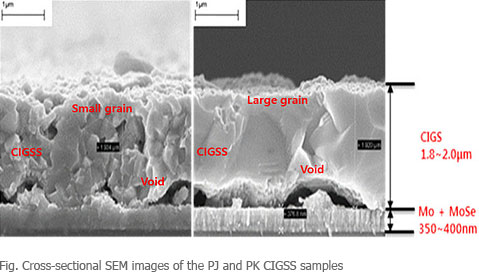
SKKU explains, "This technology will contribute to an increase in reliability and to improve the life cycle of cells related to semiconductor memory, solar batteries, and displays."
Find more information at:
http://www.nature.com/articles/srep30554

This work is the outcome of long-term collaboration between Prof. Dongmok Hwang from the School of Advanced Materials Science and SKKU's College of Engineering. Complementary metal-oxide-semiconductor (CMOS) inverter devices employing both P- and N-type field-effect transistors (FET) are some of the most common building blocks in logic circuit designs. Recently, semiconductor nanowires used as conducting channels in FETs have attracted a great deal of attention due to their potential to overcome many critical limitations encountered when scaling-down traditional lithography-based thin-film transistor (TFT) devices.
In his work, Prof. Hwang first demonstrated a simple method to synthesize highly ordered axially doped P-type and N-type conducting channel regions on a single silicon (Si) nanowire where the transport properties of each P-type and N-type conducting channel region can be modulated by efficiently controlling the doping concentration. He also attempted to fabricate the P-N junction diode and CMOS inverter, each of which can be selectively fabricated on a single Si nanowire. Based on the high-performance of the P- and N-type Si NW channel FETs which showed especially low threshold voltages, the fabricated NW CMOS inverters exhibited a low operating voltage (<3 V) while maintaining high voltage gain (~6) and ultra-low static power dissipation (≤0.3 pW) at ±3 V input voltages, thus making them suitable for high-density flexible logic device applications.
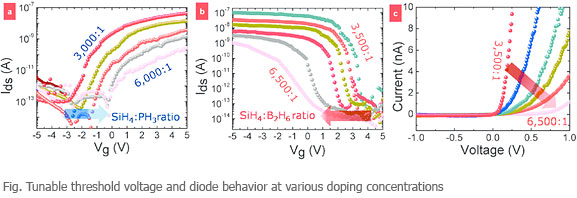
While our work deals with one of the most advanced issues concerning the density of nanowire based logic devices, the professor's approach will also have a significant impact on future work to exploit semiconducting one-dimensional or two-dimensional nanostructures including nanowires, nanotubes, nanocables or nanoribbon based CMOS for next-generation logic circuits in flexible electronic applications.
Find more information at:
http://pubs.rsc.org/en/content/articlelanding/2016/nr/c6nr01040g#!divAbstract

A research team led by Prof. Geun Hyung KIM of the Department of Bio-Mechatronic Engineering proposed the world's first hybrid cell-printing technique that combines a conventional extrusion-based cell-printing process with an electrohydrodynamic jet. The electric field stabilized the extruded struts of cell-embedding-hydrogel and reduced the damage to dispensed cells caused by the high wall shear stress in the dispensing nozzle. The new cell-printing process was optimized in terms of various processing parameters including applied electric field strength, nozzle movement speed, and distance between the nozzle tip and working stage. Due to these unique features, scholars in the field and cell-printing companies have shown interest in learning more about this technique.
To overcome shortcomings of the 3D cell-printing process such as unstable flow and potential loss of cell viability, the research team suggested an innovative cell-printing process that combines a conventional extrusion-based cell-printing process with an electric field. The electric field in the cell-printing process stabilized the extruded struts of bio-ink and dramatically reduced the damage to dispensed cells caused by the high wall shear stress in the dispensing nozzle.
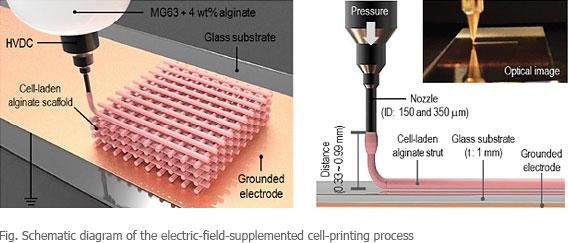
For more detail about this research, please see attached article.
Acta Biomaterialia_prof. Geun Hyung KIM.pdf (4791340KB)

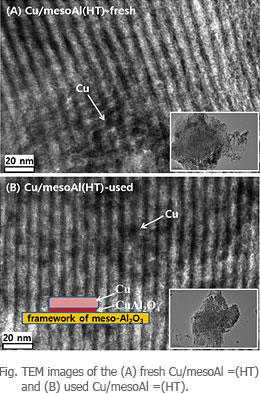 A research team led by Prof. Jong Wook Bae of SKKU successfully invented a method to convert carbon dioxide to dimethyl ether which can be applied to diesel vehicles by using a catalyst combined with aluminum oxide and copper.
A research team led by Prof. Jong Wook Bae of SKKU successfully invented a method to convert carbon dioxide to dimethyl ether which can be applied to diesel vehicles by using a catalyst combined with aluminum oxide and copper.
The team explained that they were able to make an efficient combined catalyst which can react with carbon dioxide for a long time by utilizing the optimal temperature and humidity. This technology will lead to increased productivity of energy because it can produce clean energy from carbon dioxide with a small amount of catalyst.
Find more information at:
http://pubs.acs.org/doi/abs/10.1021/acscatal.6b00882

Prof. Jang Kun Song, Dr. Tianzi Shen, and Dr. Seung Ho Hong of the College of Communication and Information, published research about the production of photonic crystals by narrowing the spaces between the graphene oxide particles in a colloid solution and precisely adjusting the crystals.
The research team observed a sequence of graphene oxide particles in colloid by using fluorescent laser scanning microscopy and discovered a layer was formed due to the electrical repulsive force between particles, but found that bed structures were not formed. Unlike the theories claiming that a lamellar mesophase is essential to produce photonic crystals, the team proved distinguished photonic crystals can be produced in the nematic phase.
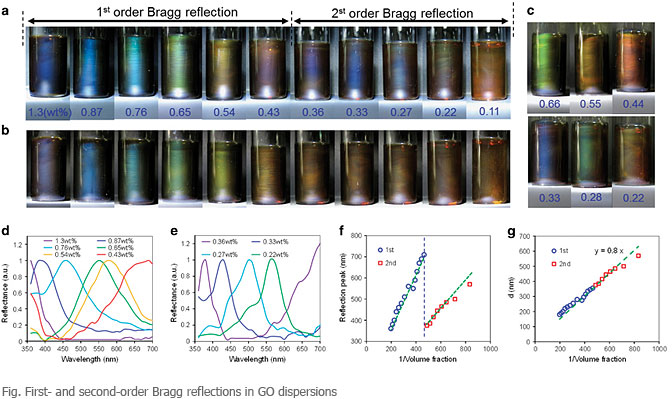
Also, they studied the ways to adjust photonic crystals and successfully demonstrated the color adjustment in them with bottom-up and top-down technology. This means that drawing color images is possible by putting colloid in the bed structure or combining them, and the result implied that photonic crystals derived from 2-dimensional colloid can be applied to a flexible electronic paper display, or a paint that can adjust colors.
Find more information at:
http://www.nature.com/am/journal/v8/n8/full/am2016110a.html

 Prof. In Su KIM and his research team at SKKU successfully invented a 'Catalytic Grignard Synthesis' that is low cost, has high efficiency, and is environmentally friendly.
Prof. In Su KIM and his research team at SKKU successfully invented a 'Catalytic Grignard Synthesis' that is low cost, has high efficiency, and is environmentally friendly.
According to the team, the Grignard Synthesis is the most common method used in organic synthesis and medicine production, and has been used for over 100 years. However, mass production was considered 'difficult' due to the managing process and some metal residuals.
From the synthesis invented by the team, direct bonds between compounds are possible without an explosive reagent, and the metal residuals are minimized. Prof. Kim explained that this study was devoted to increasing efficiency in medicine production and to minimize issues regarding the environment and safety.
Find more information at:
http://onlinelibrary.wiley.com/doi/10.1002/adsc.201600297/full






















